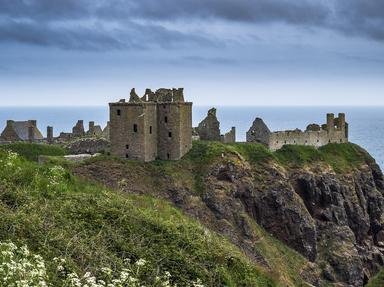Quiz Answer Key and Fun Facts
1. The first island that I visited was Gigha, the southernmost Hebridean island. To get there, I took the ferry from the tiny port of Tayinloan. Tayinloan sits in which peninsula, which is better known for whisky and a song?
2. Once I had crossed over the Sound of Gigha I spent a few hours walking around this picturesque island. Towards the end of my visit I wandered into Gigha's main tourist attraction - a subtropical garden. What is the name of this garden?
3. After my day trip to Gigha, I crossed the sea to Islay, where I spent three days. One of the first sites that I visited was the ruined castle which was the former seat of the Lords of the Isles. Situated in a loch of the same name, what is the name of the castle?
4. After my visit to the castle I drove to the town of Port Charlotte, where I was to stay for three nights. Port Charlotte is home to which kind of museum, which is one of the few museums on Islay?
5. The following day I drove out to the Oa, a peninsula in the south-west of the island. As you approach the end of road you will see a tall monument, which dominates the surroundings. The monument was built after the First World War, and commemorates solders and sailors from which country?
6. On my final day on Islay I travelled to the south-eastern corner of the island, past the trio of distilleries at Laphroaig, Lagavulin and Ardbeg, and on to Kildalton Church. Next to the church stands one of the finest examples of which type of cross?
7. I left Islay from Port Askaig, where I sailed to Colonsay. Port Askaig is one of the main ports on Islay (the other being Port Ellen), and there are regular sailings from there to Colonsay as well as Kennacraig on the mainland. You can also take frequent short crossings to which neighbouring island, seen in this foggy photograph?
8. I only had slightly less than two days to spend on Colonsay, which was just enough time to drive around the island and walk up some of the hills. If I had had more time I might have been tempted to walk up all the hills that are higher than 300 feet (91 metres) - there are 22 of them, and the distance is around 20 miles. What is the generic name for these hills, which are named after a common surname on the island?
9. Once on Colonsay, so long as the tides are right, it would be remiss for the true island-lover not to visit which neighbouring island, which is accessible across a tidal causeway?
10. At the end of my trip I finally reached the mainland again, but I was over 60 miles away from where I had started. I took the ferry from Colonsay to which town, which is known as the "Gateway to the Isles" in the heart of Argyll?
Source: Author
LauraMcC
This quiz was reviewed by FunTrivia editor
agony before going online.
Any errors found in FunTrivia content are routinely corrected through our feedback system.
